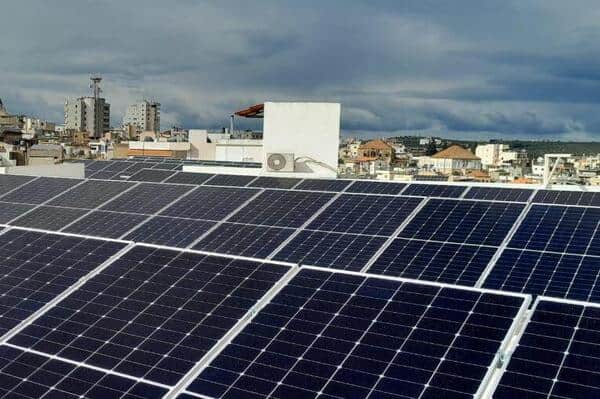Solar panels for Church in Lebanon and Syria
As the world celebrates World Sun Day on May 3rd, and to underscore the importance of renewable energy, Aid to the Church in Need shares how solar panels are making a big difference for parishes, schools, and institutions in countries where the cost of electricity has dramatically risen.
The financial crisis that has crippled Lebanon and Syria is making life difficult for the countries’ citizens. Many basic commodities are now prohibitively expensive, including electricity. In Syria, the price of electricity has increased by 500 percent.
And in parts of Lebanon, electricity provided by the state is only available for about four hours a day, which means that people have must use very costly fuel-powered generators. In Syria, the situation is worse: electricity on the grid is available for three hours a day at most, depending on the region, and generators, which are often run by mafia–like companies, are the only alternative. In some parts of the country, like Damascus and Homs, generators are mostly unavailable.
Naturally, this affects the Church. Parishes and communities are unable to provide services to the faithful; heating is limited; and the Church’s social projects, including orphanages, nursing homes, schools, and kindergartens struggle to operate in darkness. Food poisoning is also rampant due to a lack of refrigeration.
This is why Aid to the Church in Need (ACN) is funding a large solar package that will help Church institutions install solar panels. Over the past few years, the organization has approved more than 60 projects in both Syria and Lebanon, worth more than 1.7 million dollars, and the result has been the return of both light and hope to the beneficiaries. A total of 24 religious congregations will benefit from these projects, as well as 37 parishes from 16 dioceses in both countries. Solar energy will also reach 11 convents, 22 schools, and seven seminaries and novitiates.
By switching from state-produced electricity and carbon-fuel generators to solar power, these Church buildings will be an example of sustainability, in line with the Holy See’s concern for the environment.
“You are giving us the tools to build a future”
In Lebanon, the Parish of St. Tekla used to pay 60 dollars every month for its electricity. But since the installation of solar panels, their monthly bill is a mere three dollars, leaving more money for the parish’s pastoral mission, Father Christian Gerges told ACN.

Life has changed for the Congregation of the Holy Family, too. “The state provides one or two hours of electricity a day, but it’s very expensive. Our subscription for the generator cost us 30 dollars, plus expenses of between 300 and 400 dollars. But now with the solar panels, it is down to six dollars, and for the autumn months, it was nothing at all. We’ve saved a lot,” says Sister Yaout.
The sisters work with disabled people, and saving on electricity means they can now charge groups less for staying at the convent’s guesthouse, proving that the benefits of these projects shine out, like rays of light, to the wider Christian community.
Another example comes from Zgharta, where the Antonine congregation runs Mar Antonios School. During a recent visit, one student told ACN, “These new solar panels are going to change our daily lives. They will enable us to understand our lessons better. It’s like you’re giving us the tools to build our future, and we’re really grateful.”
“We are still suffering from the crisis in many ways,” a teacher added. ”But a big thank you to ACN for everything you have done. Obviously, the presence of solar panels has changed a lot of things, particularly in terms of teaching. We now have electricity for the digital blackboards, and we can teach in better conditions.”
ACN will continue to support solar panel projects, so the Church can continue its mission in the parts of the world that need it most.
—Filipe d’Avillez

